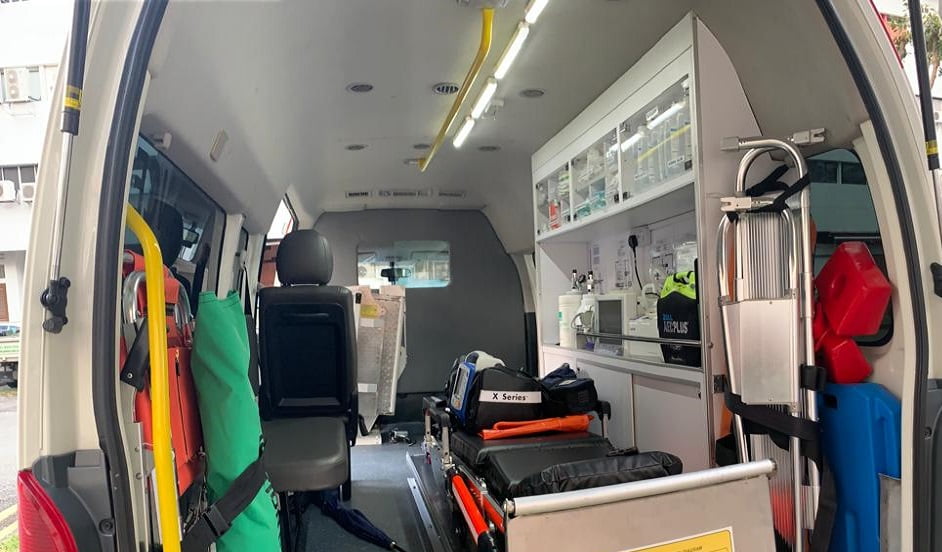In the rambling woven artwork of modern healthcare, the accessibility of timely medical assistance can mean the distinction between life and death. This essential viewpoint turns out to be much more pronounced in remote and underserved areas, where admittance to medical facilities is limited. In such contexts, Private Ambulance service in Singapore arises as an essential lifeline, filling the hole left by traditional medical infrastructure.
This blog dives into the significant role that private ambulance services play in remote areas, their effect on healthcare results, and the challenges they explore to guarantee the well-being of these frequently underestimated communities.
A Glimpse into Remote Healthcare Challenges
Remote areas, whether sloping terrains, detached islands, or bone-dry landscapes, present special challenges concerning healthcare openness. The shortage of medical facilities, absence of well-maintained streets, and geological isolation make barriers that ruin swift medical intervention during emergencies. These challenges convert into broadened response times, postponed medical attention, and compromised patient results.
Distance and Time: Critical Factors
In remote areas, the distance between a patient and a medical facility can extend over immense stretches of land or treacherous terrain. This geological isolation is exacerbated by immature street infrastructure, making it hard for traditional ambulances to immediately reach patients. In critical medical situations, such deferrals can demonstrate lethal, so check out Private ambulance prices today and save a life.
Limited Medical Facilities: A Matter of Survival
Healthcare facilities are in many cases concentrated in metropolitan places, passing on remote areas with limited admittance to medical care. Essential healthcare services, not to mention specialized treatments, might be inaccessible within a reasonable distance. In instances of medical emergencies, the shortfall of prompt admittance to proper medical care can prompt deteriorating conditions and, now and again, even mortality.
The Role of Private Ambulance Services: A Beacon of Hope
Private ambulance services arise as a beacon of hope in these healthcare deserts, offering a lifeline to those out of luck. Their capacity to explore the challenges of remote areas and give timely medical assistance assumes a groundbreaking part in further developing healthcare results.
Swift Emergency Response: Seconds Count
Private ambulance services are prepared to give quick response times, conquering the obstacles that traditional ambulances might look in remote regions. Their groups are prepared to explore troublesome terrains, empowering them to reach patients rapidly during emergencies. This swiftness can be critical in settling patients and starting essential treatments before they are moved to a medical facility.
Advanced Medical Care on Wheels: Mobile Healthcare
Private ambulance services frequently give mobile intensive care units, outfitted with medical technology and prepared medical personnel. These mobile units function as mini-hospitals on wheels, permitting critical patients to get advanced medical care even before reaching a hospital. Even with the Private ambulance prices, the degree of care can be instrumental in saving lives, particularly in situations where time is of quintessence.
Community Outreach and Education: Preventive Approach
Private ambulance services stretch out beyond emergency response; they participate in community outreach and education programs. These drives plan to bring issues to light about preventive healthcare measures, offer first aid training, and enable communities to proactively address medical emergencies. By encouraging a culture of preparedness, these services contribute to lessening the recurrence and seriousness of medical crises.
Challenges Looked by Private Ambulance Services in Remote Areas
While private ambulance services offer a hint of something better over the horizon, their operations in remote areas are not without challenges. These challenges require creative techniques and collaborations to guarantee powerful healthcare conveyance.
Infrastructure Limitations: Navigating Rough Terrain
Navigating testing terrain, from rough mountains to tremendous deserts, presents strategic challenges for private ambulance services. Guaranteeing that vehicles are equipped for crossing these terrains while keeping up with patient well-being requires careful preparation and interest in specialized hardware.
Communication Barriers: Beyond Connectivity
Remote areas frequently experience the ill effects of limited or inconsistent communication networks, hampering the capacity to arrange emergency responses. Private ambulance services should execute elective communication strategies, like satellite-based frameworks, to guarantee consistent communication and coordination with medical facilities.
Human Resource Allocation: Skilled Workforce
Selecting and holding skilled medical personnel in remote areas can be a challenge. These areas might come up short on conveniences and lifestyle conveniences that medical professionals look for. Private ambulance services should put resources into training and giving motivating forces to draw in qualified medical staff to work in these regions.
Collaboration and Innovation: Paving the Way Forward
Tending to the healthcare challenges in remote areas requires collaboration between private ambulance services, government agencies, and non-profit organizations. Additionally, embracing mechanical innovations can improve the viability of these services.
Technology-Driven Solutions: Telemedicine
Telemedicine, worked with by headways in communication technology, offers a promising solution. Private ambulance services can team up with remote medical facilities to give continuous consultations and direction from medical specialists. This approach broadens the reach of specialized medical care to areas where access was once limited.
Conclusion
In the remote areas that frequently stay on the edges of modern healthcare, private ambulance services sparkle as beacons of hope. Their capacity to give swift emergency responses, advanced medical care on wheels, and community education carries substantial upgrades to healthcare results.
While challenges endure, these services continue to adjust, enhance, and team up to conquer impediments and convey the care that remote communities frantically need. Through their dedication, Private Ambulance Service in Singapore overcomes any issues in healthcare availability, reaffirming the rule that each person, no matter what their location, merits timely and powerful medical assistance.
Read Also:
Enhancing Healthcare Accessibility: The Significance of Non-Emergency Ambulances in Singapore

